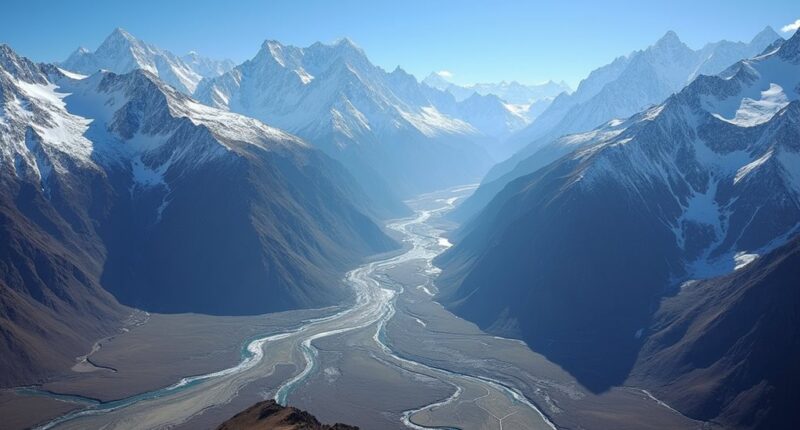The decline of Himalayan snow is more than just a mountain losing its winter coat; it’s a serious threat to nearly two billion people. With record low snowfall and dwindling snowpacks, water security is at risk. This means lower river flows during vital dry months, which farmers depend on for irrigation. Plus, the melting glaciers could lead to deadly floods. The situation’s serious, but there’s much more to unravel about this snowy crisis ahead.
Himalayan Snow Decline: A Looming Crisis
As the world continues to warm, the majestic peaks of the Himalayas are facing a surprising and troubling transformation that would leave even the most seasoned mountaineer scratching their head.
The once snow-capped giants are now showing alarming signs of decline, with record low snowfall reported for the 2024-2025 winter.
In fact, snow persistence in the Hindu Kush Himalaya region is at its lowest in 23 years, a staggering 23.6% below normal.
This is not just a freak winter; it marks the third consecutive year of below-normal snow persistence, particularly affecting the western Himalayas, where mountain peaks are increasingly bare.
What’s driving this snow decline?
Well, global warming is the villain of this story, influencing weather patterns in ways that feel more like a bad sci-fi movie than reality.
Warmer-than-average temperatures are likely behind the diminished snow cover, with weakened Western Disturbances—weather systems that typically bring winter precipitation—playing a role. The 2023 global average temperature reached 1.5°C above pre-industrial levels, highlighting the urgency of the situation. Furthermore, this significant seasonal snow decline has led to heightened drought risk in affected countries.
To add insult to injury, the subtropical westerly jet stream has shifted further north, reducing moisture reaching the Himalayas.
It’s like trying to fill a bathtub with the faucet turned off.
The implications of these changes are nothing short of catastrophic.
Almost 2 billion people depend on the river basins fed by these mountains for water.
With declining snowpack, the runoff that fills rivers during dry months is dwindling, threatening water security and leading to lower river flows.
These changes are directly linked to the increasing concentration of greenhouse gases in our atmosphere, which trap heat and accelerate the warming process.
Farmers, who rely on this water for irrigation, are feeling the strain as crop yields drop, and the insulating blanket of snow that once protected their crops from frost and erosion is vanishing.
Ecologically, the consequences are dire.
Accelerated glacier melting not only increases the risk of deadly glacial lake outburst floods but also disrupts ecosystems, leading to potential biodiversity loss.
If the Himalayas were a musical symphony, they are now playing a discordant note—one that could lead to a crescendo of disaster for millions.









